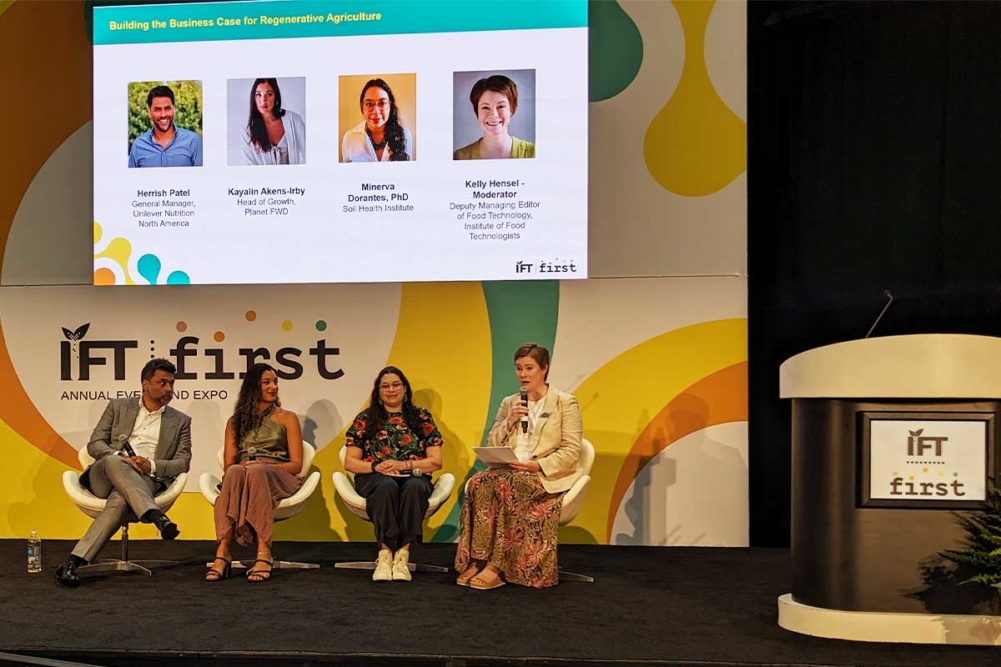CHICAGO — Regenerative agriculture must be a component of every food manufacturer’s sustainability plan in order for the industry to meet the targets it has set for itself. This was the message from the Building the Business for Regenerative Agriculture panel at IFT FIRST Annual Expo, held in Chicago, July 16-19.
“You can’t run a vertical supply chain without regenerative agriculture,” said Herrish Patel, general manager, Unilever Nutrition North America, from the panel.
Kayalin Akens-Irby, head of growth, Planet FWD; and Minerva Dorantes, soil scientist with the Soil Health Institute, joined Mr. Patel on the panel as they spoke from their own expertise on why regenerative agriculture is critical to sustainability and what some of the challenges are moving forward.
“Food powers humanity, and soil powers food,” Mr. Patel said.
Regenerative agriculture is farming practices that prioritize restoring and enhancing the soil in a way that supports ecosystem health. Common practices include introducing cover crops and no till. While Ms. Dorantes said regenerative agriculture practices aren’t a one-size-fits-all approach and take time, farmers can often see some results quickly.
“It can take a lot of trial and error, but farmers can see results pretty immediately, especially when there’s a lot of rain or drought,” she said, referencing improvements in erosion control.
Those benefits are also economic. Ms. Dorantes cited a study by the Soil Health Institute in collaboration with Cargill that examined the economic benefits of soil health. The study found that soil health management systems increased income of 85% of farmers growing corn and 80% of farmers growing soybean in the Midwest. Soil health management systems increased net income by $51 per acre for corn and $45 per acre for soy.
Despite the returns farmers can see from regenerative agriculture, there are still barriers and challenges to its adoption. Consumer awareness and understanding is low, making it difficult to justify the premium prices associated with regenerative agriculture. Ms. Akens-Irby also noted that financial incentives were necessary across the supply chain to pursue regenerative agriculture, but especially at the farm level.
“Retailers have a lot of power in accelerating the growth of regenerative agriculture,” she said.
Mr. Patel also pointed out that industry has been shouldering the burden of regenerative agriculture and other sustainability initiatives, but that it was time for the governments to do their part through incentives and subsidies.
When it comes to getting started, Ms. Akens-Irby said life cycle assessments and data can show food companies where their true opportunities lie.
“The average life cycle assessment can cost $25,000,” she said. “Planet FWD tries to make that more accessible so smaller companies can understand their hot spots and find opportunities to remedy them.”
Once companies know what their primary priorities are they can focus on a plan that makes incremental changes.





